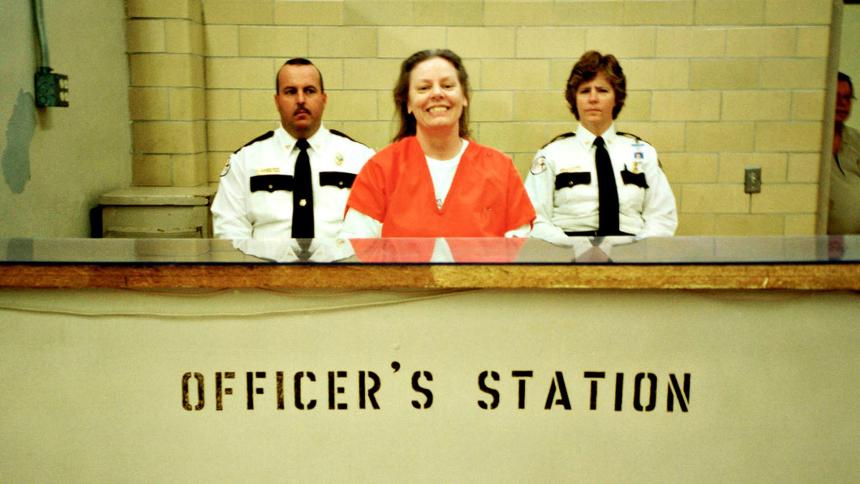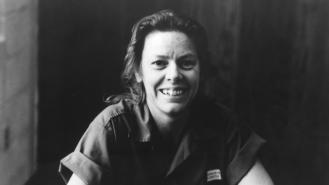
7 shocking facts about Aileen Wuornos
Between 1989 and 1990, Aileen Wuornos killed at least seven men in Florida, robbing them and stealing their cars.
In the ranks of serial killers, her name is one that stands out. She was a woman, for starters, who killed without an accomplice. She killed men seemingly in cold blood and was later executed by the state for her crimes - becoming only the tenth woman to receive the death penalty since it was reinstated in the US in the 1970s.
In the years since her death, she has continued to fascinate and repel. Her crimes have inspired endless documentaries and films, including the Oscar-winning Monster. But what makes Wuornos such an infamous murderer, someone whose name sparks instant recognition for so many people, some of whom even see her as a victim?
1. Her childhood
Wuornos was victimised from a young age. Her mother was only a teenager when she had her and her father was jailed for child molestation when she was a baby. He later hanged himself while in prison. Her mother then abandoned Wuornos and her brother, leaving them to their grandparents to raise.
Wuornos claimed she was sexually abused and beaten by her grandfather, before being passed onto his friends. At only fourteen, she was raped by one of his friends - a crime that resulted in a pregnancy. The baby was put up for adoption and then, when she was fifteen, her grandfather evicted her from the house. She became involved in sex work early on to survive.
2. Early crimes
Like many serial killers, Aileen Wuornos’ background involved earlier crimes before she moved to murder. She was arrested for DUIs, disorderly conduct and firing a gun from a moving vehicle. In 1976, she married 69-year-old Lewis Fell, but the marriage was annulled only weeks later. He filed a restraining order against her after he alleged she beat him with a cane. That same year, she was accused of assault after throwing a cue ball at a bartender’s head.
In the early 1980s, she was also accused of armed robbery, attempting to pass forged checks and suspected of stealing a gun.
By the mid-80s, her crimes had escalated further. In 1986, she was arrested for grand theft auto. That same year, she was questioned after a man accused her of pulling a gun on him and demanding $200. In 1987, she and her girlfriend, Tyria Moore, were questioned about an assault and battery with a beer bottle.
Two years later, Wuornos committed the first murder that became the start of her killing spree.
3. The first murder
Wuornos’ first victim was 51-year-old Richard Mallory, a convicted rapist. Wuornos was still in sex work and he picked her up on the interstate before taking her to a secluded area. Wuornos claimed Mallory brutally beat her, before sodomising and raping her. She shot him in the chest in apparent self-defence, killing him, dumping his body and abandoning his car.
4. The murder spree
Following the death of Mallory, Wuornos followed a similar strategy with her victims. All were white men, aged between 40 and 65 and all of them picked her up from off the highway. They would go somewhere remote, then Wuornos would shoot them with her pistol, between two and nine times, and rob them.
After Mallory, the body of 43-year-old construction worker David Spears was found naked off the highway, in June 1990. Then police found 40-year-old Charles Carskaddon, a part-time rodeo worker, a few days later.
65-year-old Peter Siems’ body was never found, but Wuornos was caught abandoning his car in July and her fingerprints were found on the door handle. 50-year-old salesman Troy Burress was found weeks after Siems’ car was spotted with Wuornos.
56-year-old Charles Humphreys, a former Air Force Major and chief of police, who had been shot six times, was found in September. Finally, there was 62-year-old Walter Jeno Antonio, a police reservist, whose body was found in November.
Wuornos’ murder spree lasted between November 1989 and November 1990.
5. Her motive
With all the murders, Wuornos first claimed that she was acting solely in self-defence. While this might have been the case with Mallory, she later changed her story and revealed that, with the exception of Mallory, she was driven only by her hatred of men. ‘I killed those men, robbed them as cold as ice. And I'd do it again, too,’ she said.
Wuornos’ partner, Moore, gave evidence to the police that helped with Wuornos’ conviction, even speaking to her on the phone in front of the police and eliciting a confession.
6. Her diagnosis
At Wuornos’ trial, psychologists for the defence said that she was psychotic and had a personality disorder. The public defender argued she suffered from extreme mental and emotional disturbance when she killed Mallory and perceived herself to be in danger. In the documentary Voice of a Serial Killer, forensic psychologist Mike Berry continued this thought, arguing that Wuornos’ victims fit the profile of her early abusers and she may have perceived the men she killed to be the same. However, she was seen fit to stand trial, later found guilty and sentenced to death.
7. The execution
For ten years, Wuornos sat on death row. In 2001, she petitioned the court to speed up her execution, adding that she was being attacked by a sonic weapon. Her lawyer tried to use this as evidence of her deteriorating mental state, meaning she wasn’t fit to be killed, but Wuornos refused to comply, claiming she was sane and ready to die.
In 2002, Wuornos was put to death. Her last words were ‘I'd just like to say I'm sailing with the Rock and I'll be back like 'Independence Day' with Jesus, June 6, like the movie, big mother ship and all. I'll be back.’ She died aged 46.











